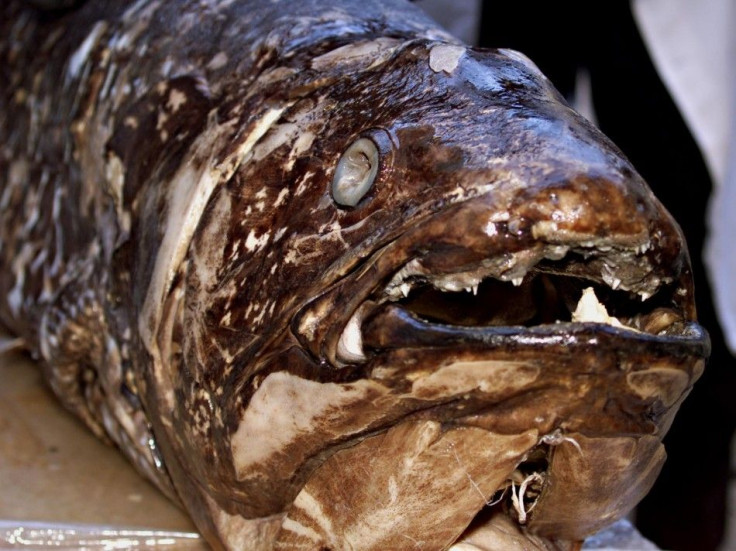'Living Fossils' Coelacanths Can Live For 100 Years, Gestate For 5: Study
KEY POINTS
- Researchers estimated coelacanth growth and age
- To do this, they used the "circuli" on the scales of specimens
- They found that the specimens were older than previous estimates
The mysterious coelacanth has surprised scientists once again. A team of researchers found that the "living fossil" can actually live up to 100 years, which is about five times longer than previously thought.
Coelacanths are quite enigmatic creatures. They are massive, reaching two meters (6.5 feet) in length, and can weigh up to 105 kilograms (231 pounds), the researchers of a new study published in Current Biology said.
Once thought to be extinct, coelacanths were rediscovered in 1938. Unfortunately, they remain poorly known because of the scarcity of specimens. Among previous studies on coelacanths, only two tried to estimate their growth and age, and these used the same 12 specimens.
These previous studies found that coelacanths lived up to no more than 20 years, placing them among the fastest-growing fish, the Cell Press news release noted. According to the researchers, this is quite inconsistent with the creatures' low metabolism and other characteristics that implied slow growth and life histories.
Centenarian fish with five-year gestation
For the new study, the researchers looked at scales from 27 coelacanth specimens that were captured off the coast of the Comoros Islands between 1953 to 1991. The idea was to look at the calcified growth structures, called circuli, on the specimens' scales. The process is similar to using tree rings to determine a tree's age.
Compared to the previous studies, the researchers used polarized-light microscopes instead of regular ones, according to Live Science.
"The technique revealed calcified structures on the scales so thin that they were very nearly imperceptible," study lead Kélig Mahé, who is from the Channel and North Sea Fisheries Research Unit at the National Institute for Ocean Science told Live Science in an email.
The researchers' work revealed that among the specimens, six were in their 60s and one was 87 years old, much older than the previous studies' estimates.
"Our validation method suggests that circuli are indeed annual, thus supporting that the coelacanth is among the longest-living fish species, its lifespan being probably around 100 years," the researchers wrote.
Examining the scales of two embryos also revealed they were five years old, indicating that coelacanth gestation lasts for about five years instead of two, which earlier studies suggested. What's more, the researchers found that coelacanths only reach sexual maturity between 40 and 69 years.
Using #coelacanth scales, scientists learn the ancient fish may live for up to a century. They also estimate that coelacanths have one of the longest gestation periods ever, roughly lasting 5 years. Read more in @CurrentBiology https://t.co/AwdNJJFeAB@Ifremer_fr Kélig Mahé pic.twitter.com/n6GQHRT7TD
— Cell Press (@CellPressNews) June 17, 2021
"Coelacanth appears to have one of, if not the slowest life histories among marine fish, and close to those of deep-sea sharks and roughies," Mahé said as per Cell Press.
'More threatened than expected'
Apart from being an incredible find, this highlights the threat that coelacanths are facing. According to the researchers, such "long-lived species" with slow life histories are particularly vulnerable because of their "low replacement rate."
So far, they are listed as "critically endangered" in the International Union for Conservation of Nature's Red List.
"Our results suggest that it may be even more threatened than expected due to its peculiar life history," the researchers wrote. "Further studies on the biology and ecology of the coelacanth, especially on its reproductive biology and behavior, are needed to be able to preserve this unique component of life on Earth."

© Copyright IBTimes 2024. All rights reserved.












